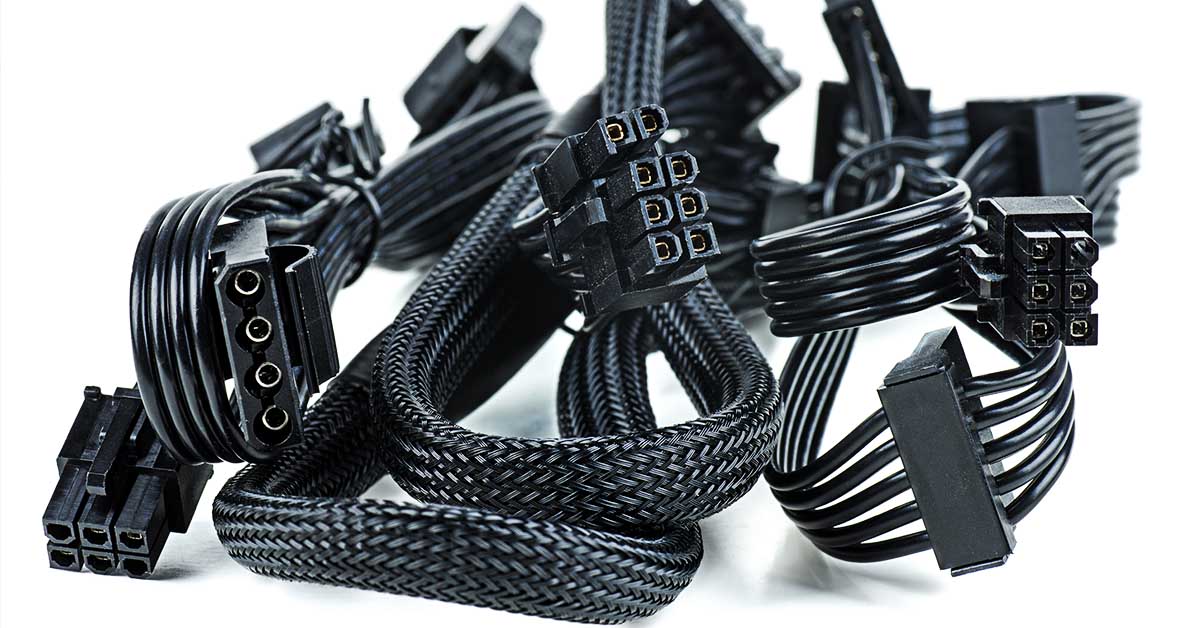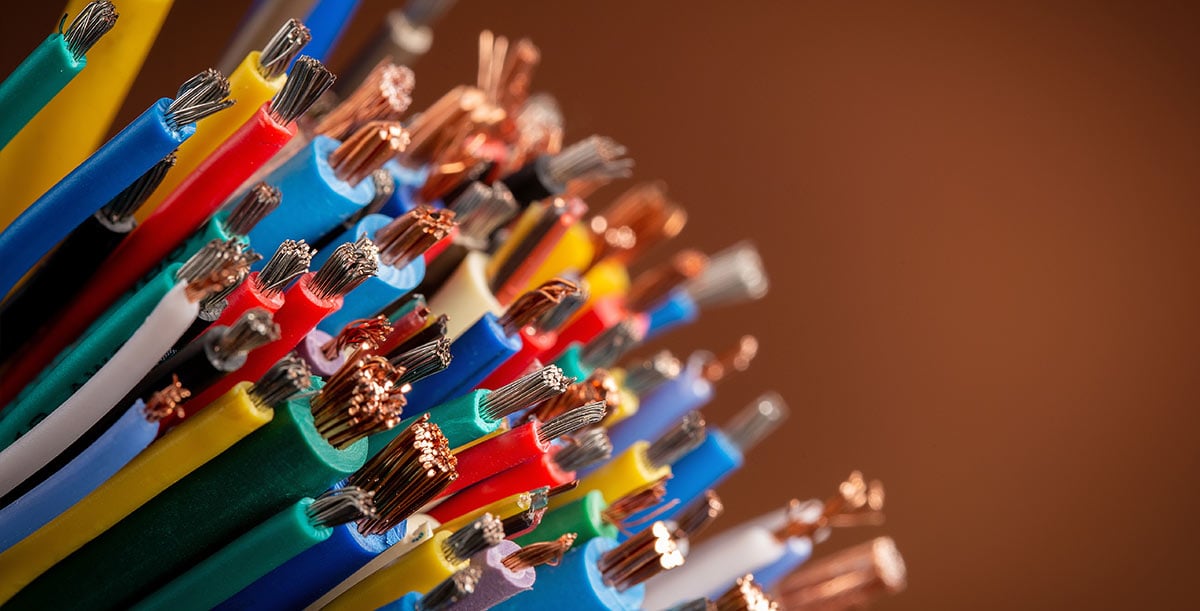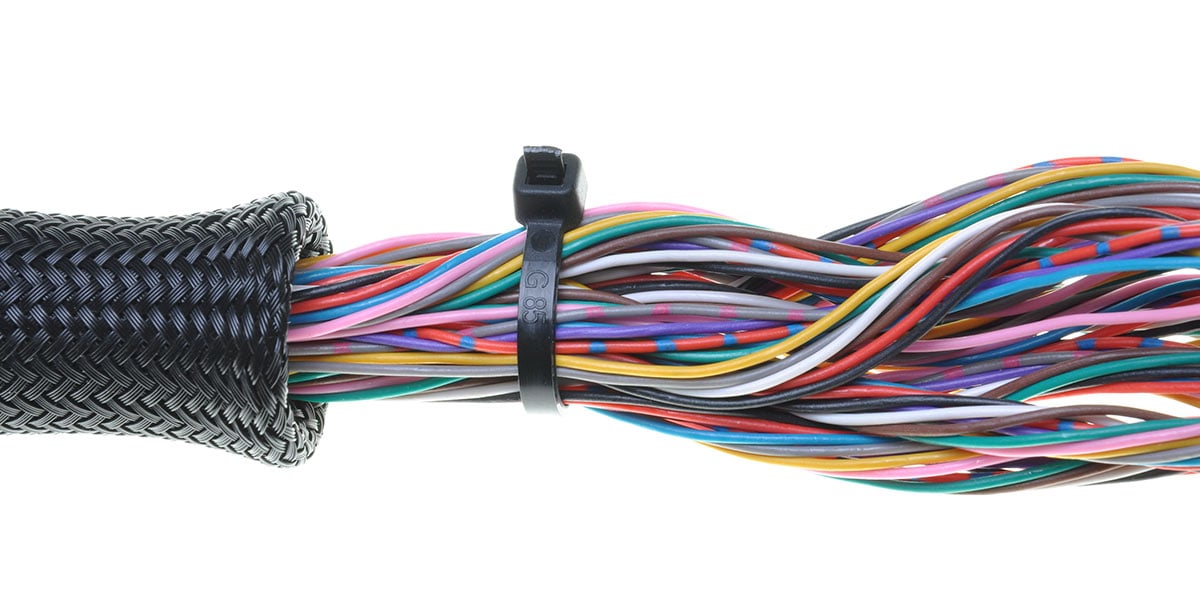31 July 2024
Power and transmission cables are essential components of any electrical installation. They are responsible for the safe and efficient transmission of energy and data in a variety of environments - from domestic to industrial. In this article we will take a closer look at the different types of conductors used in cables and discuss their construction and properties. We will also touch on the Harmonised Standard for cables and explain the difference between a cable and a conductor.

What are power and transmission cables?
Power and transmission cables are an integral part of modern electronic systems. Power cables are used to transmit electricity from one point to another. They provide power to electrical equipment and industrial systems. Transmission cables, on the other hand, are used to transmit information signals such as data, voice or video. They enable communication between different electronic devices.

Construction of an electric cable for the transmission of electricity
An electrical cable consists of a core (or cores), insulation, a shield and an outer sheath. The core is made of a material that conducts electricity well, such as copper or aluminium. The insulation is the material that surrounds the core, protecting it from short-circuiting and ensuring that it is safe to use. It is made of plastics such as PVC, PE or Teflon. Shielding is an element used only in some cables. It also protects against electromagnetic interference. The last layer is the outer jacket, which protects the entire cable from mechanical damage and environmental influences. Outer sheaths are usually made of materials such as PE, PVC, TPE or rubber.

Types of conductors
Conductors are materials that allow current to flow due to their physical properties. They are a key element in electrical and electronic systems because they efficiently transport energy and signal. Below are the different types of conductors and their characteristics to help you choose the right solution:
- CCA (Copper-Clad Aluminum)
CCA is a cable made of aluminium coated with a thin layer of copper. It combines the conductivity of copper with the lightness of aluminium. It is a popular solution due to its lower production costs than pure copper conductors. CCA is often used in installations where the weight of the cable is important, such as in the aerospace and automotive industries. Although the conductivity of CCA is lower than pure copper, its properties are sufficient in many applications.
- CCS (Copper-Clad Steel)
CCS cable has a steel core coated with a copper layer. It combines the mechanical strength of steel with the good conductivity of copper. CCS is used where high tensile strength is required, such as in overhead lines and aerial cables. This cable differs from CCA mainly in terms of cost and resistance to external factors. CCA is lighter and more economical, but offers slightly lower electrical conductivity than CCS.
- CU (Copper)
Copper is the most commonly used material in electrical conductors due to its excellent electrical and thermal conductivity. Copper conductors are also corrosion resistant, providing strength and longevity. They are used in a wide range of applications, from domestic installations to industrial power systems. Despite its higher cost, copper is chosen where reliability and performance are key.
- AL (Aluminum)
Aluminium is lighter and cheaper than copper, but has inferior conductive properties. Aluminium conductors are used where cost is more important than conductivity efficiency. Aluminium is also often used in transmission and distribution networks, where its low weight facilitates installation and reduces structural loading.
- Fiber (optical fibre)
Fibre optic cables are made of very thin glass or plastic fibres. They are used to transmit data using a modulated beam of light. Optical fibres provide very high bandwidth and low signal loss over long distances. They are immune to electromagnetic interference, making them ideal for use in environments with high levels of interference. Optical fibres are mainly used in telecommunications, data transmission and computer networks. They are ideal for transmitting large amounts of data over long distances without loss of quality.

CCA cables - a popular choice in commercial power solutions
CCA cables have become increasingly popular in recent years due to the rising cost of copper. They combine the advantages of copper and aluminium, allowing a significant reduction in manufacturing costs without a large compromise in conduction performance. CCA conductors, although less efficient than pure copper, offer sufficient conductivity for many commercial and domestic applications. This makes them often used in installations where economy is a key factor, for example in power cables for computers. However, pure copper is still preferred when designing critical systems where minimum loss and highest reliability is a priority.

Types of electric cables
Electrical cables can be divided into several types depending on their design and application. Choosing the right type of cable depends on the specific requirements of the installation and the conditions in which it will be used:
- Single conductor cables - consist of a single conducting wire. They are mainly used in simple electrical installations where flexibility is not required.
- Multi-conductor cables - consist of several conductive conductors for greater flexibility. They are used in more complex installations, such as in industry.
- Shielded cables - have an additional layer of shielding to protect against electromagnetic interference. They are used where signal quality is crucial, such as in audio/video installations.
- Reinforced cables - they are equipped with an additional layer of reinforcement which protects against mechanical damage. They are used in harsh environments, such as heavy industry.

Harmonised standard for cables - designation of electric cables
The harmonised standard for electrical cables are standards that define the characteristics of cables. They are valid throughout the European Union. They were introduced by the European Commission to standardise methods of marking materials. They ensure the compatibility of products in different countries and make it easier to identify and select suitable cables. Each harmonised marking is made up of letters and numbers which contain information about the cable's construction, materials used in its manufacture and technical specifications.
For example, the designation H05VV-F refers to a flexible cable with polyvinyl chloride (PVC) insulation and sheath, for use at voltages up to 300/500 V. The designation H03VVH2-F, on the other hand, indicates a flat, flexible cable with similar insulation but a lower voltage rating - up to 300 V.
Other examples of harmonised designations are:
- H07RN-F - multicore cable with copper conductors, rubber insulation and rubber outer sheath. Suitable for use in harsh environments, such as construction sites, at voltages up to 450/750 V.
- H03VV-H 3G1 - 1mm2 three-core thin-wire class 6 copper cable with high flexibility with PVC sheath, for 300/300 V and with a yellow/green protective conductor.
- H05RR-F - flexible cable with rubber insulation, used in domestic and light industrial applications at up to 300/500 volts.
These markings are essential for installers and engineers to quickly check the properties of a cable and ensure that it meets technical specifications and safety standards. They make it easy to select the right cable for a specific application, resulting in safe and efficient electrical installations.

How do I choose the right type of cable?
Choosing the right type of cable depends on several key factors: technical specifications, application requirements and budget. First and foremost, it is important to determine what voltage and current will be transmitted and the length and installation environment requirements. For applications requiring high conductivity performance, copper (CU) cable will be the best choice. Conversely, in situations where low cost and weight are important, aluminium (AL) or CCA cables are worth considering. Resistance to electromagnetic interference should also be considered, especially for transmission cables. The final decision should take all these aspects into account to ensure the safety, performance and durability of the installation, as different conductor types may be suitable for different requirements.
Difference between cable and wire
Although the terms "cable" and "wire" are often used interchangeably, they have different technical meanings. A wire refers to a single conductive strand, usually covered with insulation. A cable, on the other hand, consists of multiple wires protected by an additional layer of insulation or shielding. Cables are more complex in structure and are used in more demanding applications.

Power and transmission cables from Akyga®
Cables and wires are an indispensable part of modern electrical and communication systems. Understanding the differences between conductor types such as CCA, CCS or CU is essential for the right choice of cables. Knowledge of conductor construction and the types of electrical cables allows a better understanding of their functions and capabilities. And with the harmonised standard, users can easily identify and select the right cables, resulting in the efficiency and safety of their installation. Akyga offers a wide range of cables to suit different needs, ensuring both quality and cost-effectiveness.
